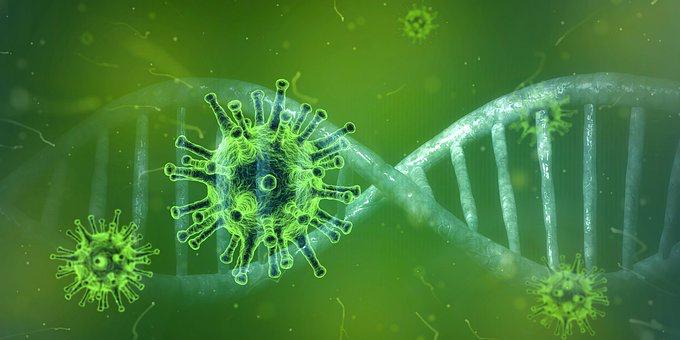A cure for HIV requires the eradication of latent (i.e., dormant and therefore hidden) virus from reservoirs in immune cells throughout the body. HIV latency depends on the activity of proteins from the human host called histone deacetylases (HDAC), and previous work has shown that HDAC inhibitors (HDACi) can disrupt HIV latency. A study published on September 17th in PLOS Pathogensreports results from a clinical trial of an HDAC inhibitor that had shown potential in preclinical studies and answers open questions about the potential use of these drugs in strategies to eliminate HIV from the body.
Ole Søgaard, from Aarhus University Hospital, Denmark, and colleagues designed the trial to investigate further the potential of HDACi as the latency reversal component in the ‘kick and kill approach’ to purge HIV reservoirs. They chose a single HDACi called romidepsin and investigated the drug’s clinical safety and potential for reversing HIV latency in individuals on long-term antiretroviral therapy (ART) as well as its impact on T cells (an earlier study had suggested that HDACi might negatively affect killer T cell function thus impairing the elimination of HIV-infected cells by the immune system).
The trial involved six participants (all Caucasians) with a median age of 56 and a median time on ART of 10 years. The participants received one romidepsin infusion per week for three consecutive weeks and were followed for several weeks after that. While all individuals experienced some side effects (or adverse events), those were generally mild, and all participants completed the full course of treatment.
When the researchers analyzed blood samples from the participants at different points in the trial, they found the expected biochemical response to HDAC inhibition following each administration of the drug. Concurrently, they saw evidence of HIV transcription–the first step of latency reversal–in all participants. And after the second infusion, HIV RNA became detectable and quantifiable with standard clinical assays in blood plasma in five of the six participants. As previous studies had not consistently shown an increase in plasma HIV RNA, even using ultrasensitive assays, the researchers suggest that this “establishes a new benchmark for future trials investigating the in vivo potency of latency reversing agents to be used in HIV eradication efforts.”
Furthermore, romidepsin did not alter the proportion of HIV-specific T cells, inhibit T-cell cytokine production, or induce other changes that suggest an impaired T-cell response. This, the researchers say, is “critically important for future trials combining HDACi with interventions (e.g. therapeutic HIV vaccination) designed to enhance killing of latently infected cells by cytotoxic T cells.”
“The present study,” they summarize, “demonstrated potent in vivo latency reversal with a single drug resulting in increased plasma HIV-1 RNA that was readily quantified with standard commercial assays and did not show negative effects on T cell immunity.” Moreover “the magnitude of viral induction in the present study was greater than anything previously reported for any latency reversing agent tested in humans.” However, they also acknowledge that, as with previous studies, their data do not answer what proportion out of the total pool of inducible latently infected cells were “kicked out of” latency in the participants,” and that “despite the increases in viral production and preserved T cell functions, no substantial changes in the size of the HIV reservoir were observed.”
Nonetheless, the researchers feel that their combined results “have important implications for the use of romidepsin as the latency reversal agent in a multi-component HIV eradication strategy where this drug may be combined with interventions designed to enhance killing of latently infected cells.” In fact, they mention one such trial combining romidepsin with therapeutic HIV-1 vaccination that is currently under way at the same institution that, they hope, “will shed light on the mechanisms needed to effectively clear the cells that produce viral particles.”
FROM SCIENCE DAILY.































